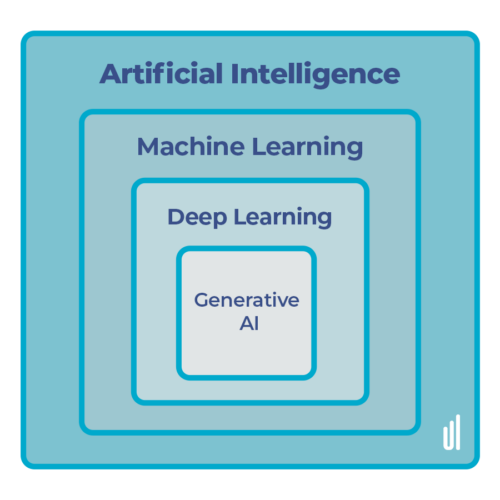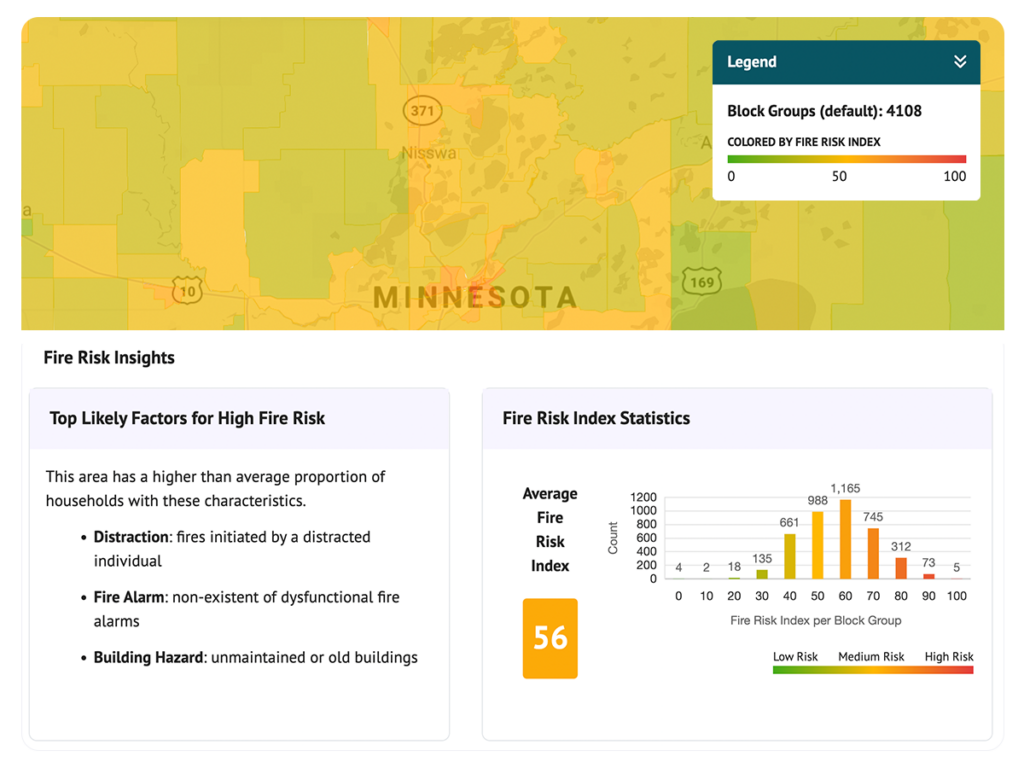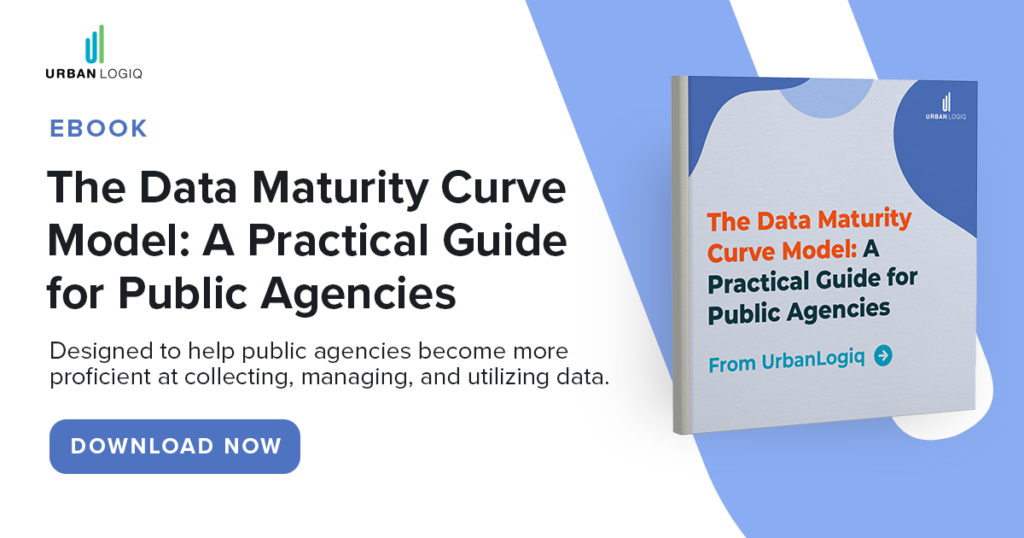Harnessing AI in Government: Challenges, Opportunities, and Best Practices
Artificial intelligence (AI) is more than just a passing trend; it’s a dynamic force rapidly transforming our world. In the realm of public services, AI’s increasing complexity and relevance offer new opportunities for efficiency and innovation. However, the journey for public agencies to adopt AI is not as straightforward as it is for individuals or businesses. It requires thoughtful consideration and strategic planning, particularly around issues such as ethics, privacy, and governance.
In this blog post, we explore the intricacies of AI adoption in the public sector. We’ll dive into the different subfields of AI, examine the essential role of data governance, and outline practical steps and best practices for implementation.
Additionally, we’ll cover examples of emerging policy and regulation and wrap up with practical advice for government leaders to remain informed and adaptable in the rapidly advancing AI landscape!
The different fields of AI
Artificial Intelligence (AI) encompasses several subfields, each with unique attributes, best suited for different applications. While terms like Machine Learning, Deep Learning, and Generative AI are often used interchangeably, they have distinct characteristics.

AI Subfields Simplified
Understanding the different AI subsets is crucial for determining their alignment with your organizational goals. The level of risk you’re comfortable with (we go deeper into risk modeling later in this blog) may dictate the type of AI you select for your use case. For example, if you require the decision-making process of an algorithm to be fully explainable, you might steer clear of deep learning.
We previously published a blog post on this topic, offering an in-depth breakdown of these different subfields. For a more comprehensive understanding, we recommend checking out that post first!
AI in government: a look back
Contrary to popular belief, AI is not an entirely new phenomenon in the realm of government operations. For years, governments have been using forms of artificial intelligence, often without explicitly labeling them as AI. These tools include heuristic models or decision support systems to streamline complex operations. However, clearly, the field of AI has evolved dramatically, both in complexity and capability. This evolution opens new vistas of opportunity, allowing governments to leverage AI in more dynamic and impactful ways than ever before.
New opportunities
As discussed, rapid technological advancements are unlocking opportunities for operational improvements. Below are just a few examples of how artificial intelligence could support the public sector.
Automating Routine Work: AI has the potential to automate a significant portion of routine work in government. If managed effectively, it can enable governments to reallocate resources towards more value-adding roles internally, thereby elevating the quality of public services.
Adapting to Unique Community Needs: Effectively harnessed AI can empower governments to become more responsive to their communities’ evolving needs. This would allow for services and operations that are more finely tuned to the unique requirements of diverse sub-groups within different communities.

Data science Fire Risk Model predicting likelihood of house fires in a specified community in the UrbanLogiq platform
Increasing Transparency and Accountability: Government operations can, at times, be perceived as opaque and subject to subjective human decision-making. By employing AI that operates on clear rules and utilizes transparent data, decisions can become more data-driven and comprehensible. This is particularly achievable if there are stringent requirements for AI models to be explainable and auditable.
“AI in government isn’t just about buzzwords. It’s a transformative force with the power to revolutionize decision-making.” – Mark Masongsong, CEO of UrbanLogiq
Common AI adoption challenges
Workforce Preparation
One of the foremost challenges in embracing AI within government is the aspect of organizational change management. The adoption of AI necessitates adjustments to existing workflows and potentially, the redefinition of roles. Equally important is ensuring that staff are well-trained and knowledgeable about AI technologies. Not only grasping how AI functions work at a high level but understanding the limitations and ethical implications as well.
A significant decision is whether to develop AI expertise in-house or to outsource these expertise. Many government agencies struggle to find the right talent, given the highly specialized nature of AI technology. This dilemma often shapes the trajectory of AI implementation in public sector settings.
“Embracing AI involves redefining roles, nurturing staff expertise, and deciding whether to cultivate AI talent internally or source it externally. The scarcity of specialized AI skills often guides public-sector AI implementation. Leveraging external expertise not only tackles this challenge but also secures knowledge capture and transfer.” – Mark Masongsong, CEO of UrbanLogiq
Data Hygiene and Governance
Effective AI usage hinges on the availability of clean and well-organized data. Governments frequently grapple with legacy systems filled with outdated or unstructured data, posing a considerable challenge to leveraging AI effectively. Additionally, acquiring a sufficient volume of high-quality data to feed AI systems is a substantial obstacle. Often, the data at hand may be too limited or lack the diversity required to build robust AI models.

Source: FactorDaily / Datamize
Data Privacy and Security
The accuracy and effectiveness of AI models increase with the volume of data they process. To offer insightful analytics about communities, extensive data collection is often necessary. This raises a critical tension between upholding citizens’ right to privacy. Additionally, with an increase in data comes the heightened risk of privacy breaches.
This dichotomy between data utility and privacy concerns is a key challenge that governments must navigate in the AI era. One way that public agencies are addressing this concern is through sunshine laws, which promote accountability by requiring certain data and/or proceedings to be available to the public.
What are successful governments doing to drive success?
1. Robust, Organization-Wide Data Governance
In the realm of public sector AI adoption, data governance is not just a supporting act — it’s a headliner. A robust data governance strategy addresses the challenges we’ve discussed earlier and is crucial for ensuring that any use of AI is both effective and ethical.
Data governance guides how data is stored and managed within your organization. It encompasses safeguarding privacy and security, complying with regional legislation, and adhering to ethical guidelines. Particularly because government sectors handle sensitive citizen information, strict protocols ensure responsible data handling and help maintain public trust.
2. Treating Data As a Strategic Asset
Both data governance and data management are integral to the successful adoption of AI in government. While data governance sets the framework and policies for data use, data management focuses on the practical aspects of collecting, handling and utilizing data effectively. Together, they form a comprehensive approach to harnessing the full potential of data in public services.
The adage ‘garbage in, garbage out’ aptly highlights the dependency of AI applications on the quality of input data. Governments must carefully consider both the type and volume of data needed for their AI models to function optimally. Effective data management ensures that data is not only clean and organized but also strategically utilized. By treating data as a strategic asset, governments can significantly enhance the performance and reliability of their AI systems.
3. A Clear, Top-Down AI Strategy
A critical step in driving AI success is aligning the AI strategy with your organization’s overarching strategic goals. This alignment ensures that AI initiatives are not pursued in isolation, but rather are integrated into the broader objectives of the agency. After all, AI should not be viewed as a universal remedy applicable to all scenarios. Instead, its deployment should be thoughtfully tailored to meet specific needs and contexts. Such an approach helps departments and staff identify where AI can be most beneficial and impactful, focusing on areas that align with the organization’s core mission and values.
4. Risk Modeling
Once your organization has identified potential use cases for AI, the next critical step is thorough risk modeling. Risk modeling entails looking at each AI use case, and determining the level of risk your organization is comfortable with. This process might involve mapping out the “worst-case scenarios” to anticipate and mitigate potential pitfalls.
For example, if your organization is using an AI model to determine social welfare distribution, the model in use may need to be completely explainable to check for bias. Deep learning models, often termed as ‘black boxes’, offer substantial power and sophistication but may fall short in transparency. As such, Deep Learning may not be the appropriate AI subfield to select for this use case. More straightforward machine learning models, on the other hand, can provide clearer insights into their decision-making processes.
Such scenarios highlight the tension between AI and public policy, trade-offs between performance and explainability, and the necessity of considering both technical risks and broader social implications in AI development. Governments must weigh the benefits and drawbacks of different AI models, ensuring that their choice aligns with the desired level of risk, transparency, and ethical responsibility.
5. Investment in change management
AI initiatives won’t reach their full potential unless an organization adapts its workflows to accommodate these new technologies. Deloitte’s “State of AI in the Enterprise, 4th Edition” report suggests that “nurturing an agile, data-fluent culture makes organizations over 1.5 times more likely to achieve their desired AI outcomes.” This goes beyond just introducing new technologies; it involves a fundamental shift in operational processes and an embrace of data-driven decision-making.
Moreover, establishing the appropriate structures and roles is vital for AI transformation. This might look like designating existing staff with relevant backgrounds, like IT Managers, to monitor and guide the AI journey. Or it might mean creating new positions, like New York City’s Algorithms Management and Policy Officer or Vancouver’s Chief AI Officer, to oversee AI policies and applications. These changes, both in mindset and organizational structure, will help with a successful transition.
6. Iterate often
AI systems are not set-and-forget tools; Unlike traditional systems, AI technologies demand continuous monitoring, updating, and refining. For example, a common event known as ‘model drift‘ occurs when an AI’s performance deteriorates over time. To counter model drift, regular assessments and updates are essential to maintain the accuracy and effectiveness of AI models.
Likewise, an AI strategy should not be viewed as a one-time effort but as a dynamic, evolving plan. Just as AI models require frequent updates, the strategies governing their use must also adapt to changing circumstances, technological advancements, and new insights. This iterative process ensures that AI systems and strategies remain relevant and aligned with the organization’s evolving goals and the needs of the public they serve.
The role of partnerships in AI success
Government agencies, while experts in their respective fields, often lack specialized data science expertise. However, this gap can be effectively bridged through strategic partnerships. The aforementioned Deloitte AI Institute report underscores this point, revealing that 83% of the most successful organizations leverage a diverse ecosystem of partnerships to execute their AI strategies.
These partnerships can take various forms, including collaborative development of solutions, licensing of existing technologies, accessing AI resources, or even complete outsourcing of AI development. For instance, UrbanLogiq specializes in harnessing and validating large-scale government data, turning it into actionable insights. Our web-based platform offers AI solutions equipped with robust data security, privacy measures, and ethical algorithmic controls. By democratizing data science, we enable communities of all sizes to harness AI advancements.
Outcomes of a collaboration between UrbanLogiq and the City of San Jose where machine learning techniques were used to determine the characteristics of dangerous roads. Image source: San José Open Data Portal
In the broader landscape of AI accessibility and innovation, the synergy between government, private sector, and academia is vital. Academic institutions are instrumental in developing the science and technology that underpins AI advancements. In an era where large corporations are capable of developing proprietary AI breakthroughs, academic research remains a crucial factor in maintaining open access to this powerful technology. Meanwhile, government plays a significant role as both consumers and regulators of AI, ensuring its safe and ethical development. This tripartite collaboration helps ensure that AI is developed responsibly, ethically, and in a manner that benefits society as a whole.
Adapting to technological and policy advancements in AI
As AI continues to evolve rapidly, governments must stay adaptive both technologically and in policy-making. We dive into some best practices for doing so below.
Learning from Global Practices
The global AI policy landscape offers a wealth of diversity and insight. Different countries have varying approaches, with many setting clear AI guidelines and ethical standards. This diversity is a rich source of insights for crafting adaptable, forward-looking policies. Some of these policies include:
Informed Leadership and Collaboration
For government leaders, staying abreast of AI advancements is essential. Some ways to do this include:
- Participating in AI-focused conferences and events
- Engaging with policy think tanks
- Keeping up with ongoing research and development
Such activities can help foster informed, responsible decision-making, helping to shape progressive AI strategies.
Agility in Policy-Making
To adapt to the rapid evolution of AI, governments could consider:
- Establishing dedicated AI governance bodies
- Conducting regular policy reviews
- Fostering collaborations with academia and the private sector
- Joining (or forming!) groups like the Government AI Coalition to enable knowledge-sharing and collective problem-solving
Addressing AI threats
The advent of AI in government brings not only a myriad of positive opportunities but also the responsibility to be aware of potential misuses. AI can fuel misinformation campaigns and drive sophisticated cyberattacks, posing significant societal risks. As such, it’s essential to recognize and prepare for these risks to ensure the ethical and safe application of AI technologies. Vigilance in these areas is as important as fostering innovation, ensuring that AI’s power is harnessed safely and ethically.
Looking ahead
As we’ve explored, the integration of AI in government is not just a futuristic concept; it’s a present reality with immense potential and significant challenges. AI technology is transforming how public services operate, bringing efficiency and innovation to the forefront. However, this journey is not without its complexities. The importance of robust data governance, strategic selection of use cases, risk modeling, and addressing the challenges of AI literacy and organizational change management cannot be overstated. Furthermore, adaptive policies and regulations play a critical role in ensuring that AI’s deployment is both ethical and effective.
By embracing these principles and continuously learning, governments worldwide can harness the power of AI to not only enhance public services but also to pave the way for a more innovative and responsive public sector!





